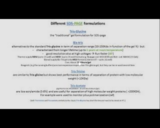
Some tips to select, prepare and run SDS-page for your protein sample?
- Subject:
- Life Science
- Material Type:
- Lecture
- Author:
- Manuele Martinelli
- Date Added:
- 02/22/2021

Some tips to select, prepare and run SDS-page for your protein sample?
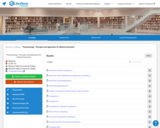
The Medical Assistant Pharmacology OER includes an electronic textbook, a lab skills checklist electronic book, instructions for a student assignment to create glaucoma glasses with the 3D printer, and instructions for creating a 3D anatomical model of the skin and underlying muscle tissue to be used for clinical injection instruction and practice. The proposed MA Pharmacology text will include content related to pharmacology principles, critical thinking, and practical skills that are focused on the roles, responsibilities, and tasks of the MA in an ambulatory healthcare setting. The lab skills checklist book will supplement the chapters in the textbook and provide step by step instructions and assessments for laboratory activities.

The Technical Services Group at MIT’s Department of Physics provides technical and teaching support for undergraduate courses at MIT. These brief videos of physics demos display subtle physics concepts ranging from electromagnetism, to kinematics, to optics.
Online Publication
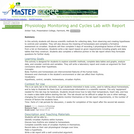
This activity allows students to explore and reflect on circadian rhythms in themselves, influences of their lifestyle on those rhythms, investigate them in a scientific manner, and draw conclusions of their findings in a lab report format with data tables and graphs.A 2+ week take home lab activity with a lab report and graphs at the end. Can be used to explore the scientific method, physiological cycles, and how to share scientific knowledge.
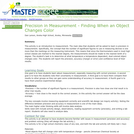
This inquiry activity is designed to have students measure when a mood object (pencil or straw that changes color with temperature) changes color. They can than report on their precision, accuracy, margin of error, degree of uncertainty, and level of confidence in their answer.
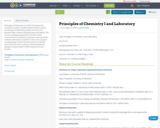
Principles of Chemistry is a study of fundamental chemical concepts: scientific measurements, matter and energy, stoichiometry, atomic structure, the periodic table, chemical bonding, gases and liquids. The course is designed primarily for students with a concentration in biological or physical sciences and for students interested in transfer to a four-year program in engineering. A three-hour lab session is required each week. All course content created by Kimberly Stieglitz. Content added to OER Commons by Julia Greider.

This is a short experimental study of what happens to aluminum hydroxide, silicic acid, magnesium oxide, and calcium carbonate (or reagents of instructors choice) when they are heated to 110 and 1200 degrees.
Students determine the formula and calculate the mole percent and weight percent of each element and oxide in each reagent.
They heat the samples and calculate percentage weight loss or gain.
Finally, they write a lab report summarizing their results.
Be sure to have students save their samples for later use in a lab that introduces X-ray diffraction.
(Note: this resource was added to OER Commons as part of a batch upload of over 2,200 records. If you notice an issue with the quality of the metadata, please let us know by using the 'report' button and we will flag it for consideration.)
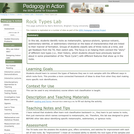
This lab helps students link concepts about how rocks form with observations about how rocks look. It is designed to help them learn rock classification in a more connected manner than is usual.
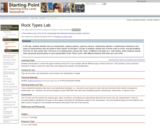
This lab helps students link concepts about how rocks form with observations about how rocks look. It is designed to help them learn rock classification in a more connected manner than is usual.
(Note: this resource was added to OER Commons as part of a batch upload of over 2,200 records. If you notice an issue with the quality of the metadata, please let us know by using the 'report' button and we will flag it for consideration.)
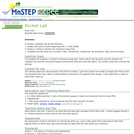
This activity is lab based competition. The students engineer a 2-litter rocket to have the maximum hang time. After the initial launch, the students are given an opportunity to re-engineer to produce a better time. The activity finishes with a lab write-up.
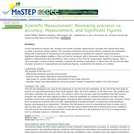
This is an introductory physics lab where students will review scientific measurement concepts, and then develop a procedure, in which they will use the concepts of proper precision in measurement and significant figures, to determine the density of a marble.
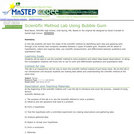
This activity is a lab investigation where students gather data which compares 2 types of bubble gum, while learning to use the scientific method to collect qualitative and quantitative data using SI units.
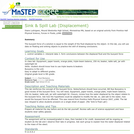
This is in class lab activity where students will explore the buoyant force.
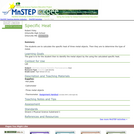
The students are to calculate the specific heat of three metal objects. Then they are to determine the type of metal.
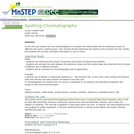
In this mini-lab students will use chromatography to compare the mobile phase and the stationary phases of different inks used in marking pens. They will also determine the polarity of the solvents and inks. Finally, the students will use their calculated information to solve a crime.

Systems Neuroscience Laboratory consists of a series of laboratories designed to give students experience with basic techniques for conducting systems neuroscience research. It includes sessions on anatomical, neurophysiological, and data acquisition and analysis techniques, and the ways these techniques are used to study nervous system function. Training is provided in the art of scientific writing with feedback designed to improve writing skills. Assignments include weekly preparation for lab sessions, two major research reports and a series of basic computer programming tutorials (MATLAB®). The class involves the use of experimental animals. Enrollment is limited.
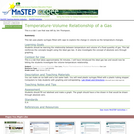
This investigation uses the relationship between volume and temperature to reinforce the ideal gas law. It also uses the data collected to find absolute zero.
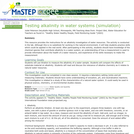
This investigation is a laboratory activity in which the alkalinity of 2 types of substrates (carbonate vs. non-carbonate) are compared on the basis of titration. Students will reflect on the relationship of alkalinity and toxic heavy metals. Teaching ideas from: Project Wet, Water Education for Teachers as found in: "Healthy Water Healthy People, Field Monitoring Guide "(2003)
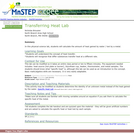
This lab introduces or reinforces the concept of specific heat and the transfer of heat amongst substances.
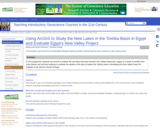
In 1978, the Egyptians constructed a canal known as the Toshka Spillway from Lake Nasser into a low area to the west to allow spillover of Lake Nasser water. Despite the fact that the spillway was created in 1978, it wasn't until the late 1990s that Lake Nasser actually filled up to the level of the spillway canal and the overflow lakes began to form. In November of 1998, US astronauts orbiting in the Space Shuttle noticed the lakes filling for the first time, and they have had water in them ever since.
Egypt has embarked on a long-term and far-reaching irrigation plan to create habitable land away from the Nile River Valley. The Toshka Lakes are not, however, a formal part of the project. One of the main points of the exercise is to have students use both their knowledge of Saharan hydrogeology and GIS analyses to evaluate whether the Egyptians are wise not to use the lakes as part of the proposed system of water distribution.
In this exercise, students download and prepare their own SRTM DEMs and learn how to determine areas and volumes using ArcGIS. They can then ask questions and use ArcGIS to determine the answers. How much water is in the Toshka Lakes? What happens if Lake Nasser rises and more water flows down the canal? Will more lakes form, or will the lakes that are there just get bigger? How much water might be evaporating from the lake surfaces? How much water has to flow down the canal to keep the lakes at a particular level? What might happen as the annual Nile flood fluctuates from year to year?
The document posted for downloading contains two homework assignments, two in-class activities, and a wrap-up assignment.
You can also download a GIS Primer (Acrobat (PDF) PRIVATE FILE 1.2MB Mar30 10) that we have written, which is a simple GIS "how-to" manual for tasks including those used in this exercise.
(Note: this resource was added to OER Commons as part of a batch upload of over 2,200 records. If you notice an issue with the quality of the metadata, please let us know by using the 'report' button and we will flag it for consideration.)